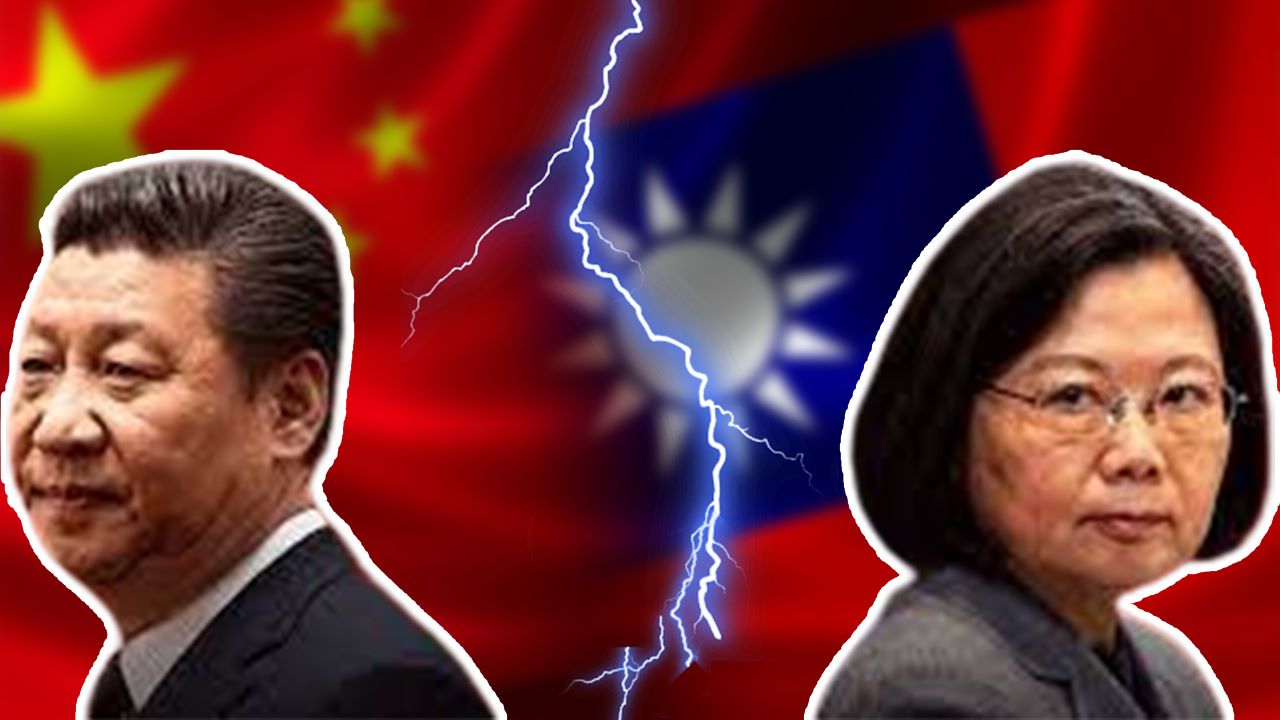Taiwan has reportedly secured the delivery of a massive 4,000-ton patrol boat amid increased activity by the Chinese Coast Guard and People’s Liberation Army Navy (PLAN) in and around the waters of the contested Taiwan Strait.
Taiwanese President Tsai Ing-wen oversaw the launch of the Coast Guard ship “Taipei” on March 9. Focus Taiwan reported that Taipei is one of the Chiayi-class offshore patrol vessels manufactured indigenously by Taiwan’s CSBC Corporation.
Tsai stated that Taiwan anticipated that its national shipbuilding program would highlight the nation’s commitment to defending freedom and democracy during a ceremony in Kaohsiung. Tsai also witnessed the delivery of “Yunlin,” the sister ship of Taipei, which was formally launched in December 2022.
Some military experts have noted that the Chiayi-class patrol vessels, including the ones that were launched on March 9, were originally designed to have a displacement of 4,000 tons, but it was later changed to 5,000 tons during the constriction phase. EurAsian Times does not have an official verification of this information.
The Chiayi-class patrol vessel is a heavy patrol vessel of the Coast Guard Administration of Taiwan. The class’s helipad and hangar can accommodate a UH-60 Black Hawk helicopter. The vessel also has an X-ray facility, a surgical suite, and a medical center with a negative pressure area.
President Tsai Ing-wen oversaw the launch Saturday of the 4,000-tonne Coast Guard ship "Taipei," one of the Chiayi-class offshore patrol vessels ordered from Taiwan's CSBC Corporation. https://t.co/qiJ7d99TbZ
— Focus Taiwan (CNA English News) (@Focus_Taiwan) March 9, 2024
Four ships of the Chiayi class were planned for the Taiwan Coast Guard. The first Chiayi was launched in June 2020, the second Hsinchu in April 2021, and the third Yunlin in December 2022. With the Taipei, all four vessels have now been delivered.
President Tsai informed reporters that the government has allocated NT$42.6 billion (US$1.35 billion) for an initiative to strengthen Taiwan’s maritime patrol capabilities and the local shipbuilding industry. Under the program, which started in 2018, 141 Coast Guard ships are expected to be completed by 2027, according to the Ocean Affairs Council (OAC).
The Council claimed on February 9 that the Yunlin has a 10,000-navigational-mile range and can endure level-10 winds. According to the OAC, it has three water cannons for chasing away targets and field hospital-caliber medical stations.
Additionally, the ship’s helicopter pad could be used to transfer wounded soldiers. The Chiayi-class Coast Guard patrol vessels are known for their excellent range and maneuverability.
Su Tzu-yun, a research fellow at Taiwan’s Institute for National Defense and Security Research, told CNA in an interview that the ships’ purpose was to guard civilian ships from pirates and escort fishing boats registered in Taiwan operating in disputed waters. If needed, Su added, they could even be used against Chinese coast guard vessels.
Military experts also believe that the displacement of the vessels is similar to that of the largest patrol vessels in the USCG fleet, the Legend-class national security cutters of the United States Coast Guard (USCG). The vessel is equipped with water cannons, 20mm guns, remote weapons stations, and 2.75-inch rockets. It also has space for the placement of anti-ship missiles in case they become necessary during a battle.
The launch ceremony comes at a time of high cross-strait tensions with China since two Chinese fishermen died while being chased by the Taiwanese Coast Guard on February 14 off the coast of Kinmen, where the fishermen were allegedly trespassing. In response, China began regular patrols in the Kinmen Island waters, which are controlled by Taiwan but lie close to the Chinese coast.
Taiwan Under Pressure
According to official reports, China will increase its defense spending by 7.2% this year, supporting a military budget that has more than doubled during President Xi Jinping’s 11 years in office as Beijing toughens its stance on Taiwan.
This year’s hike is far higher than the government’s predicted rate of economic growth, and it is consistent with the pace reported in the previous year’s budget.

As it unveiled the budget statistics, China also formally adopted harsher language toward Taiwan, eliminating any reference to “peaceful reunification” from a government report Premier Li Qiang presented at the opening of the National People’s Congress (NPC).
Just two days after this, a Taiwan defense ministry report said China has escalated its use of “grey-zone” warfare against Taiwan, hoping to “saturate” the region around the democratic island with balloons, drones, and civilian boats.
Taiwan’s administration, which denies Beijing’s claims to sovereignty, has been complaining recently that China has been employing what is known as “grey-zone warfare,” which is the use of erratic tactics to wear down an adversary without going to war.
The ministry claimed that to harass Taiwan, Beijing has started using “multi-front saturated grey-zone” methods, such as stepping up ship and aircraft patrols.
Referring to an unofficial border between the two sides that China’s forces have started routinely crossing in recent years, the report claimed that China has attempted to “increase burdens of our naval and air forces and to obscure the existence of the median line in the strait.
The report also allegedly added that China has resorted to using research and militia vessels in a move to “disguise military activities with civilians”. EurAsian Times recently reported on how China deployed the Zhu Hai Yun to investigate the waters of the Taiwan Strait around the self-ruled island state that it has vowed to occupy and unite with the Chinese mainland.
The confrontation between the two countries’ Coast Guards appears to be a by-product of the larger tensions festering in the region. On its part, Taiwan has called on China to cease its effort to change the status quo in the Kinmen Islands.
The operation of all four Chiayi class patrol vessels would likely bolster its effort at warding off threats in the region.
- Contact the author at sakshi.tiwari9555 (at) gmail.com
- Follow EurAsian Times on Google News




